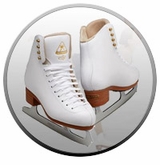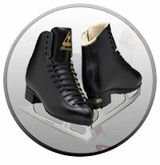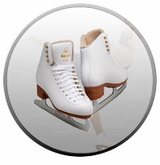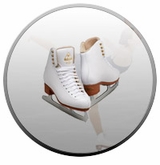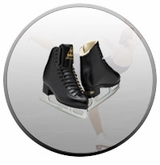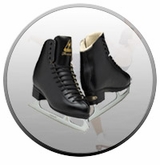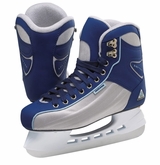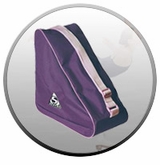History of Figure Skating
Let’s first start with quick look at where ice skating itself began. Some believe ice skating had its beginnings in Scandinavia sometime between 3000 and 1000 B.C. The first recorded mention of ice skating is found in a biography of Thomas Becket (London born monk) written by his former clerk William Fitzstephen around 1180.
It is believed that early ice skaters in the Northern European countries used ice skating as transportation rather than for recreation, exercise or as a sport. Archaeological evidence supports this theory with findings of ice skates in Scandinavia, Germany, the Netherlands and other northern European countries. By the 1600s, the Dutch commonly used ice skating as means of transportation between villages.
Ice skating was introduced in England sometime during the 17th century, possibly by Dutch sailors. The English did not have the same need or opportunity to use ice skating for travel, so they mostly skated on frozen ponds. This led the English to slightly modify the blade to allow for quick turns and circles. This modification likely resulted from the pond environment (small round skating area), and likely led to the birth of what we now know as figure skating.
Figure Skating is Born
Once people discovered the exhilarating art of figure skating, the world forever changed the way it viewed ice skating. The British enjoyed this new found activity, and took great pride in perfecting their moves. By the middle of the 17th century, a group of Scotts formed the first known skating club.
European colonists or the English military personnel likely introduced ice skating in America and Canada in the mid 1700s. By 1849, the “Philadelphia Skating Club and Humane Society” was formed as America’s first known figure skating club. According to the Philadelphia Skating Club & Humane Society’s website - the club’s written objectives were to provide instruction and improvement in the art of skating, cultivation of a friendly feeling in all who participated in the amusement of skating and efficient use of proper apparatus for the rescue of persons breaking through the ice. Since the group skated on river ice, they fell through from time to time and needed an effective way to rescue members that had fallen through the ice.
Around 1870, an American figure skater named Jackson Haines (considered the father of modern figure skating) was the first person to blend dance moves with ice skating. Haines' new style was quite the opposite of the popular English style because he incorporated a combination of ballet moves into his routine. He also used music with his routines which was a new concept that that time. Since figure skaters in the United States initially rejected his new style of skating, he moved to Vienna, Austria, where his style of figure skating became popular. Figure skaters did not adopt Haines' style in the United States until well after his death.
By the 1860's, ice skating rinks were being built in major cities throughout Canada and the United States. In 1892 the International Skating Union (ISU) was formed, and established international standards to govern skating sports. Figure skating was also added to the Olympic Games in the 1908 Summer Olympics in London, England. In 1921, the United States Figure Skating Association (USFSA) was formed to govern figure skating within the United States. These professional organizations brought standardization and legitimacy to the sport and art of figure skating. The ISU and USAFA are still out front, leading the way for figure skating in the United States and abroad.
The First Ice Skates
Historians are not in full agreement when it comes to when the first ice skates were invented. Again, most believe that the first pair of ice skates date back somewhere between 3000 and 1000 B.C., and were invented by the Scandinavians. Regardless of the exact time ice skates were invented, most everyone agrees that they were made from animal bones taken from horses, cattle, elk, oxen and other animals. Skaters tied these bones to the bottom of a pair of boots or shoes and glided across iced over lakes and ponds.
Many historians believe that sometime in the 14th Century, the Dutch started using wooden platform skates with flatiron bottom runners. These ice skates were said to have been attached to the skater's shoes or boots with leather straps or clamps. Around 1500, it is believed that the Dutch added a narrow metal double edged blade which greatly aided the skater’s ability to glide across the ice. The figure skate itself was dramatically improved in 1848 when E.W. Bushnell of Philadelphia developed an all-steel skate, replacing the wooden footplate. Mr. Bushnell’s skates were instrumental in increasing the popularity of ice skating. Following this, the next significant changes to the ice skates came sometime after 1900. The main developments in the figure skate after the addition of the toe pick, and the closed-toe blade of one-piece steel, which made the skate lighter and stronger than any previous skate.
|
|||||||||||||||||||
Skate Equipment >
Ice Skating Equip
Ice Skating Info
.
